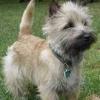-
Content count
171 -
Joined
-
Last visited
About Fu_doggy
-
Rank
Dao Bum
Recent Profile Visitors
2,543 profile views
-
For the past two years, I have been practicing Wim Hoff breathing + bhastrika pranayam + kapala bhati pranayam (as taught by Vasant Lad) followed by ZZ. Very positive results, no negatives.
-
@Taomeow - thought provoking post. Especially the part about "The diary itself is not for long-term preservation, not for sharing, and not for re-reading -- it's the process that counts." So I decided to google Nikkido and the top hit was... your post. ;-) Any suggested reading on Nikkido? Thanks...
-

Which are your favorite yoga nidra scripts?
Fu_doggy replied to Oneironaut's topic in General Discussion
Bhathen - I also like swamij's yoga nidra. -

Does breathing play a significant role in your practice....?
Fu_doggy replied to ChiDragon's topic in Daoist Discussion
To the OP's original question: I start my day with 20 minutes of abdominal breathing. This is one of the more basic of qigong practices, however, it works well for me. After that I go on to other practices. -
@exorcist_1699 - can you tell us a little about your qigong practice? I'm always interested in the methods people practice to build their qi and jing. Thanks...
-
I love Ram Dass. While Be Here Now is his best known work, his book Paths to God; Living the Bhagavad Gita is also excellent. May he RIP.
-

Yoganandas 'double breathing' combined with Wim Hof method
Fu_doggy replied to Rakiel's topic in General Discussion
Keep us posted, thanks! -

Yoganandas 'double breathing' combined with Wim Hof method
Fu_doggy replied to Rakiel's topic in General Discussion
@Rakiel - thanks for the info. How long have you been practicing WHM that way? And, are you seeing a difference in your exhale-hold times? I have been practicing similar to Learner, with a slight hold after the inhale of one or two seconds....that's giving me max hold times. -

Yi Jin Jing (muscle/tendon changing classic)
Fu_doggy replied to konchog uma's topic in General Discussion
Vajra First - no, nothing like the stuff Gary Crooms is demonstrating. Also, doesn't appear to have much in common with the book you linked to that has 49 postures. But it is almost exactly the same as this: https://www.youtube.com/watch?v=8hEyAuF6_0M The style I practice has the same 23 postures as in this video, though there are some differences in intent, etc. The master who taught me called it the "Dot Mo" or "Da Mo" style of YJJ. Dot Mo is another name for Bodhidharma, the supposedly original creator of YJJ. -

Yi Jin Jing (muscle/tendon changing classic)
Fu_doggy replied to konchog uma's topic in General Discussion
I practice a style of YJJ that was taught to me by a master in Orlando. The postures are similar to those in Dr. Yang Jwing Ming's book. It is done with power, force, and it's physically demanding. And, it's invigorating. My work has me either sitting in a business meeting, or sitting on a plane or sitting in front of a computer (note the common element) so the YJJ done with power is a great contrast to how I spend my work day. To start this new year 2017, I began a 100 consecutive day practice of YJJ, seeing where it takes me. For those that are going to learn from a book, I can vouch for a style such as Dr. Yang teaches in his book. One item of interest: If you read Dr. Yang's book, he states past a certain age your results will be minimal. I'm north of 60 years old, so when I first read this, I was concerned. Turns out the master in Orlando who taught me doesn't agree. And after practicing for several years, neither do I. -
For those of you that want to google C.K. Chu's practice spell it like this: Eternal Spring Chi Kung. I've practiced the style for the better part of 10 years now as a morning program. Can vouch for it. There are about 10 chi kung exercises in the program, the total of which invigorate every part of the body.... legs, arms, torso, etc. ESCK is different in that some of the exercises are vigorous. Definitely wakes you up in the morning!
-
smallsteps - you ask a great question. Regarding Flying Phoenix, I found it to be an outstanding system. I have had some experiences during my practice of FP that were "supernormal", really outstanding. Also, Sifu Terry is one of the very best masters of Chinese arts. I have been fortunate to have practiced with him in person in California on several occasions. So, I highly recommend FP and working directly with Sifu Terry to anyone. As to why I am not practicing right now, let's just say I am taking a temporary break and hopefully within the next 6 months I will be able to get back into the practice. Vajra Fist - yes, I still practice yoga with WHM. In fact, Wim teaches a number of yoga poses in his course. So, yes, yoga is very complimentary. Unlike many qigong systems, Wim doesn't mention any incompatibilities with WHM breathing. Regarding pushups at the end of the breathing rounds, I only do the pushups once, at the end of the last round. So, whether I'm doing 4 rounds, 5 rounds or 8 rounds, just one set of pushups. The most I've done is 50 pushups on a held breath. Those were full pushups with good form by the way. That said, that's not my norm. Normally I'm closer to 38 to 42 pushups on the last held breath. These days I'm not trying for any personal best pushup records, I just enjoy the experience. Good practicing! fu_doggy
-
Vajra Fist - I'll chime in... yes, I'm still doing Wim Hof Method, now past the 18 month mark. It seems each month my health, energy and mental acuity continue to improve. Also, with improved energy my appetite has diminished...I no longer crave large meals. So, for me the positive results have been cumulative. One thing I really like about WHM is it's simplicity and efficiency. In less than 30 minutes per day, I get excellent results. If I wake up in the morning and am feeling not quite with it, after WHM I feel energized and fresh. Also, the sensations during the breath holds are pleasing, and sometimes other worldly. And, I continue to do the cold water thing....now actually enjoy it. So, yah, I'm sticking with it. The base routine is 4 rounds of WHM breathing before breakfast. However, I'm still experimenting with variations to optimize my practice. For example, for me, I found four rounds before bedtime will result in too much energy, staying awake half the night. No bueno. However, a single round, or perhaps two before bedtime will release tension and aid deep sleep. So, I'm not sure where the ceiling is with the practice, but I know I've not yet reached it. By the way, love this thread. tao stillness....I appreciate your contributions, great job of keeping it going!
-

TM is not real meditation, it is more like hypnosis
Fu_doggy replied to Tibetan_Ice's topic in General Discussion
A lot of this depends on a person's definition of meditation. Also, someone made the point there is not "one way" to do this. Like Learner, I like Wim Hof Method. I've been practicing for about 18 months now. As he stated, the meditative states come in small snippets when the breath is held. I will say though, what I've experienced during the breath holds is quite different, also quite pleasing. Wim says the meditative portion of WHM can be profound. It's not standard meditation, however, I'm enjoying the journey. Another part of Wim's method is "cold therapy", which I have also been doing. A few months ago while on vacation I went into an icy pool of water formed by melted snow....and I didn't feel the cold. Before going in I expected to feel the cold, with the ability to tolerate it. But fact is, I didn't feel it. I stated in about 15 minutes, then got out. This quite surprised me. Never tried TM. I occasionally make some runs at other types of meditation, including Dr. Easwaran's "passage meditation", but WHM is every day. -

The Book that changed your Perspective of Life?
Fu_doggy replied to Shad282's topic in General Discussion
Good thread, hope it keeps going. For me the book that changed my outlook on life, spirituality and the human condition was The Brothers Karamazov, by Dostoevsky. All of Dostoevsky's books are outstanding, but the Brothers Karamazov offers insights into human nature that I have not seen from anywhere else.- 35 replies
-
- 1
-

-
- Book
- meditation
-
(and 3 more)
Tagged with:






